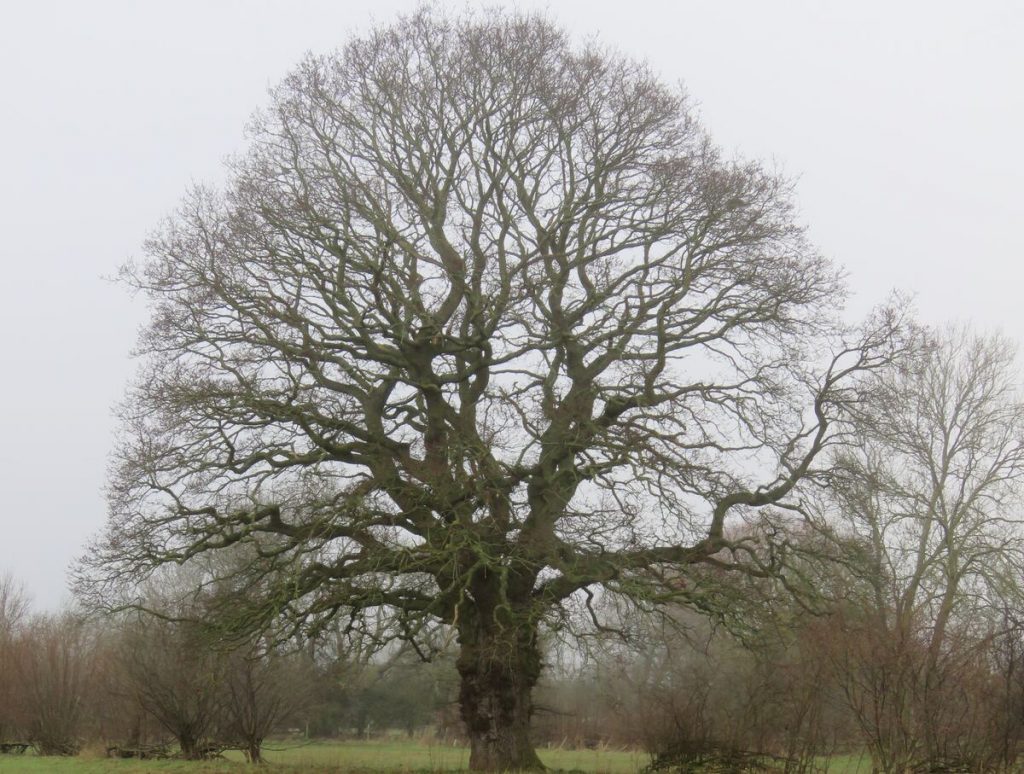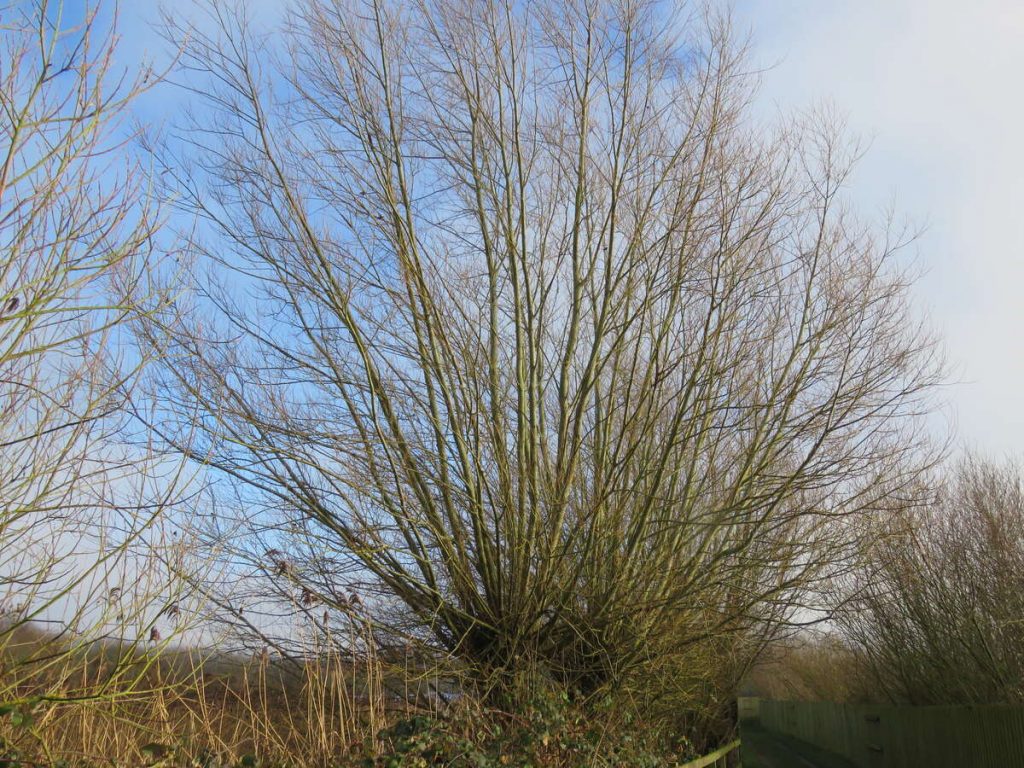Nature Notes – Trees in Winter
If, like me, your tree knowledge is sketchy, winter is a good time to identify a few species. Away from parks and gardens, native species make up a high proportion of the trees that you might find. Some of the commoner species are described below.
Helpful aspects of “bare” trees in winter are shape and size, bark colour and texture, and any still visible, withered fruits and leaves.
Pendunculate (English) Oak
Mature trees are large and spreading with heavy branches. Often an oak tree is the dominant and most obvious tree in an open wood or an ancient hedgerow. You are likely to find acorn cups beneath the tree and small clumps of brown remnant leaves.

Ash
This is a very common tree in our area. Mature trees are tall and erect and can be found as standard trees in most hawthorn hedgerows. They also thrive when planted much closer together than spreading trees such as the oak. Look out for grey bark (especially young trees), obvious black buds and withered bunches of winged seeds (ash keys) that have not blown away.
Willow
There are many species of willow, not easily separated by amateur tree hunters. Two to look out for are Weeping Willow and Osier. The lower branches of Weeping Willow hanging down almost to the ground (or water surface by streams) are just as prominent when bare as they are in leaf. Osiers are managed to provide flexible “whips” used by basket makers and for hedge laying. The trees are often pollarded or coppiced. Pollarded trees are cut a few metres above the ground whilst coppiced trees are cut close to the ground. In both cases, they produce large numbers of upright, thin, flexible stems. Pollarded trees beside water can look very “structural” and the dense whips provide good concealment for birds and small mammals.

Larch, Silver Birch and Wild Cherry (Gean)
Larch is our only deciduous conifer. Once it has shed its needles we see a tall, upright tree with hanging branches with large numbers of small cones. In a wood of mixed conifers a larch looks like a dead tree. In isolation, tall, brown and with drooping branches, a friend I was talking to described it as “looking sad”.
Silver Birch with white bark, often peeling in patches and Wild Cherry (Gean) tall and upright with shiny reddish-brown bark, ringed horizontally, are two other trees that are particularly noticeable in winter
We are all looking forward to spring but there is still much to see in the countryside given a crisp day in winter.
David Scott




 Former Trustees of KCH Return
Former Trustees of KCH Return

